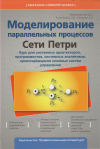There have been three more very interesting talks in our Eletromagnetism Interest Group’s seminars.
All their recordings can be found here:
http://www.ncl.ac.uk/eee/research/interestgroups/nemig/
Professor Russell Cowburn
Cavendish Laboratory, University of Cambridge
IEEE distinguished Lecturer 2015
Most thin magnetic films have their magnetization lying in the plane of the film because of shape anisotropy. In recent years there has been a resurgence of interest in thin magnetic films which exhibit a magnetization easy axis along the surface normal due to so-called Perpendicular Magnetic Anisotropy (PMA). PMA has its origins in the symmetry breaking which occurs at surfaces and interfaces and can be strong enough to dominate the magnetic properties of some material systems. In this talk I explain the physics of such materials and show how the magnetic properties associated with PMA are often very well suited to applications. I show three different examples of real and potential applications of PMA materials: ultralow power STT-MRAM memory devices for green computing, 3-dimensional magnetic logic structures and a novel cancer therapy.
Prof. David Daniels CBE
Managing Director, Short Range Radar Systems Limited
Visiting Professor at University of Manchester
Ground penetrating radar (GPR) is an electromagnetic technique for the detection, recognition and identification of objects or interfaces buried beneath the earth’s surface or located within a visually opaque structure. GPR can be used for many applications ranging from geophysical prospecting, forensic investigation, utility inspection, landmine and IED detection and through wall radar for security applications.
The main challenge for GPR as an electromagnetic imaging method is that of an ill-posed problem. The physical environment is in many situations inhomogeneous and consequently both propagation parameters and reflector / target occupancy are spatially variable. Current imaging methods such as diffraction tomography, reverse time migration, range migration and back projection work when the propagation parameters are well described and stable and the target radar cross section is relatively simple. The future challenge for GPR is to develop robust methods of imaging that work in real world conditions with more demanding targets.
The seminar will introduce the principles of the technique, the basic propagation issues as well as time domain and frequency domain system and antenna design from the system engineer’s viewpoint. Various applications will be considered and the basic signal processing methods that are used will be introduced using examples of some signal and imaging processing methods. The seminar will briefly consider the future developments needed to improve the inherent capability of the technique.
Paul Sutcliffe is Professor of Mathematical Physics at Durham University
Abstract: Non-abelian Yang-Mills-Higgs gauge theories have classical solutions that describe magnetic monopoles. These are stable soliton solutions with no singularties, that have the same long-range electromagnetic fields as those of a Dirac monopole. There are also multi-monopole solutions that have surprising symmetries, including those of the platonic solids.


